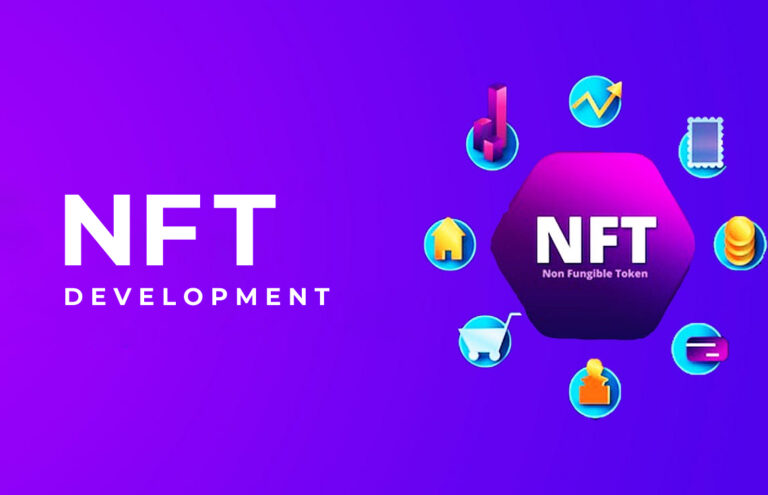
Contents
Non-Fungible Tokens (NFTs) have revolutionized the way digital assets are created, owned, and exchanged. As the popularity of NFTs continues to soar, understanding the steps involved in NFT development has become essential for creators, businesses, and investors looking to capitalize on this burgeoning market. In this comprehensive guide, we’ll delve into the intricate process of NFT development, from conceptualization to deployment, exploring each step in detail and providing valuable insights for anyone venturing into the world of NFTs.
Step 1: Conceptualization and Ideation
The journey of NFT development begins with a spark of creativity and a clear vision. During the conceptualization phase, creators brainstorm ideas for their NFT project, defining the concept, theme, and objectives. Whether it’s digital art, music, collectibles, or virtual real estate, defining the scope and purpose of the NFT project is crucial for its success. This phase often involves research, market analysis, and collaboration with other stakeholders to ensure that the NFT aligns with current trends and audience preferences.
Step 2: Content Creation and Digitization
Once the concept is solidified, the focus shifts to content creation and digitization. This step involves bringing the vision to life through digital assets such as images, videos, audio files, or 3D models. Creators leverage their artistic talents or collaborate with designers, musicians, or other creatives to produce high-quality content that will form the basis of the NFT. Attention to detail, originality, and aesthetic appeal are paramount during this stage, as they contribute to the perceived value and desirability of the NFT in the marketplace.
Step 3: Tokenization and Smart Contract Development
With the digital assets in hand, the next step in NFT development is tokenization. Tokenization involves converting the unique characteristics and ownership rights of the digital assets into a non-fungible token on a blockchain platform. Ethereum, Binance Smart Chain, and Flow are among the most popular blockchain networks used for NFT development, each offering unique features and capabilities. Smart contracts, self-executing contracts with pre-defined conditions, are then deployed to govern the creation, ownership, and transfer of the NFTs, ensuring transparency, security, and immutability of the transaction records.
Step 4: Metadata and Minting
Metadata plays a crucial role in NFT development, providing additional context, information, and provenance about the digital assets. Creators attach metadata to the NFTs, including details such as title, description, artist information, creation date, and edition number. This metadata enhances the discoverability and authenticity of the NFTs, enabling collectors and enthusiasts to make informed purchasing decisions. Once the metadata is finalized, the NFTs are minted, or created, on the blockchain, generating a unique token ID and establishing ownership rights for the holders.
Step 5: Marketplace Integration and Listing
After minting, the NFTs are ready to be showcased and traded in online marketplaces dedicated to NFTs. Creators can choose from a variety of NFT marketplaces, including OpenSea, Rarible, Foundation, and many others, depending on their target audience, niche, and preferences. Integration with these marketplaces involves creating accounts, uploading the NFTs, setting pricing and royalty preferences, and listing them for sale or auction. Marketing and promotion efforts are often deployed to attract attention to the NFTs and drive engagement and sales within the marketplace ecosystem.
Step 6: Community Engagement and Interaction
Community engagement is a vital aspect of NFT development, fostering connections between creators, collectors, and enthusiasts within the NFT community. Creators actively engage with their audience through social media, forums, Discord channels, and virtual events, building excitement, loyalty, and trust around their NFT projects. Community feedback and support can play a significant role in shaping the direction and success of NFT projects, driving demand and fostering a vibrant ecosystem of creators and collectors.
Step 7: Secondary Market Monitoring and Management
Beyond the initial sale, NFT development also involves monitoring and managing the secondary market for the NFTs. Creators track the performance of their NFTs, analyze market trends and pricing dynamics, and adapt their strategies accordingly to optimize sales and maximize returns. This may involve adjusting pricing, releasing new editions or collections, collaborating with influencers or brands, or implementing other tactics to maintain interest and demand for the NFTs over time.
Step 8: Continuous Innovation and Evolution
NFT development is an ongoing process characterized by continuous innovation and evolution. Creators are constantly exploring new ideas, technologies, and trends to push the boundaries of creativity and redefine the possibilities of NFTs. Whether it’s experimenting with new art styles, integrating interactive elements, or exploring emerging blockchain platforms, staying ahead of the curve is essential for long-term success in the dynamic and rapidly evolving NFT landscape.
Conclusion:
From conceptualization to deployment, the steps involved in NFT development are multifaceted and intricate, requiring creativity, technical expertise, and strategic thinking. By following these steps and embracing innovation, creators, businesses, and investors can unlock the full potential of NFTs, creating unique digital experiences, fostering vibrant communities, and shaping the future of digital ownership and expression. As NFTs continue to gain momentum and adoption, mastering the art of NFT development will be key to staying relevant and competitive in this exciting and transformative space.